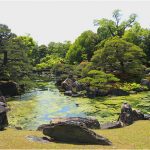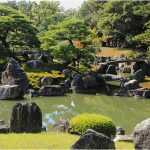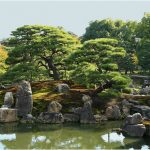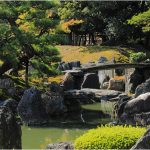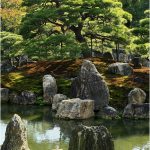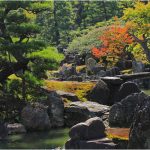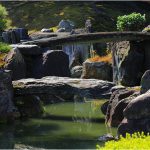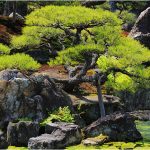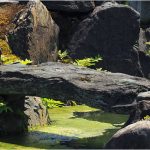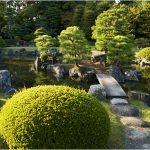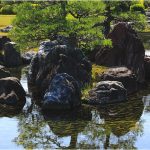Nijo-jo Palace was built in 1603 by Tokugawa Ieyasu who unified Japan after a long period of civil war. The same year at this site, Tokugawa was appointed shogun by the Emperor. 250 years of prosperity and stability followed. In 1867 from this site again the 15th and the last shogun Tokugawa returned the power to the Emperor. At this date started the Meiji period characterised by the modernization of Japan and the end of a long period of its isolation from the rest of the world. The most important of the three gardens of the Nijo-jo Palace is Ninomaru garden which was reconstructed by Kobori Enshu on the occasion of the Emperor’s visit in 1626. Ninomaru garden consists of a pond with the Horai island, flanked with a turtle island and a crane island with impressive and complex stonework. The site is classified World Cultural Heritage by UNESCO.
